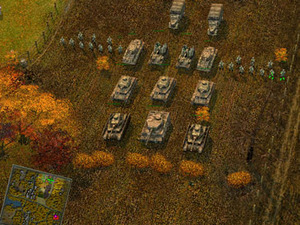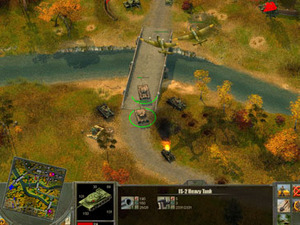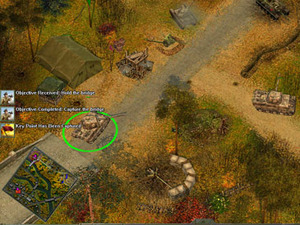Introduction
‘Jumping in at the deep end’ is the cliché that comes to mind when beginning to play an expansion pack to a game without having touched upon the original. Whilst expansion packs are generally for those who have played the original through and demand more content, Fall of the Reich has actually been released as a stand-alone not-quite-sequel, designed to appeal to new gamers as well as fans of the original.Set amidst the grand finale of World War II in the Spring of 1945, as Allied forces converge upon Berlin and the Axis frantically try to hold strategic cities in order to prevent the fall of their regime, it’s the same uninspiring war plot of old.
However, Fall of the Reich’s campaigns do not actually let you take control of the US or British and, instead, you take the role of the Allied Russians, invading Germany from the east, or the German Axis, defending Germany from this invasion. As a result, most of the action takes place on the Eastern Front, a region seldom covered by war games. This is a refreshing change from the overzealous coverage of the American input in the war by the majority of developers but, unsurprisingly, Fall of the Reich was made by Russians.
For those who played the original Blitzkrieg 2 released last year, this expansion adds these two aforementioned campaigns, eight new completely historical missions, new rewards, four new historically authentic units, six new single player maps and four new multiplayer maps.
The gameplay style of Blitzkrieg 2 is hinted at in its title, which translates from German as ‘lightning war’. This was a tactic employed by Hitler’s mob during the beginning of the conflict that hoped to attack the enemy so rapidly and efficiently that the opposition would not have time to mobilise their counter-attack or defence plan; us gamers prefer to call this ‘rushing’. This tactic is synonymous with a lot of RTS games and can often ruin online play for gamers who prefer to accumulate a vast army before obliterating the opposition.
Blitzkrieg 2 removes the concept of a ‘base’ or managing resources and, therefore, rushing is paramount. You spawn with a certain number of units then you can call in a further limited number of reinforcements as your original units are destroyed, but you can also call in various aircraft to perform reconnaissance drills or to bomb the hell out of your opposition. The only option you have when beginning a mission is to head straight into battle. On the surface, this can seem to lack the depth of most RTS games but there is still a certain level of tactics that go into how you use your available army and it can prove to be very challenging, as I was quick to find out.
However, the majority of the time the most effective method seems to be to get all your strongest tanks together and rushing straight for the enemy, rather than using any particular strategy; it is simply a case of strength in numbers. Yet, even with a legion of tanks you can still find them very frustratingly easily destroyed by long range artillery often hidden deep within the fog of war.

MSI MPG Velox 100R Chassis Review
October 14 2021 | 15:04














Want to comment? Please log in.